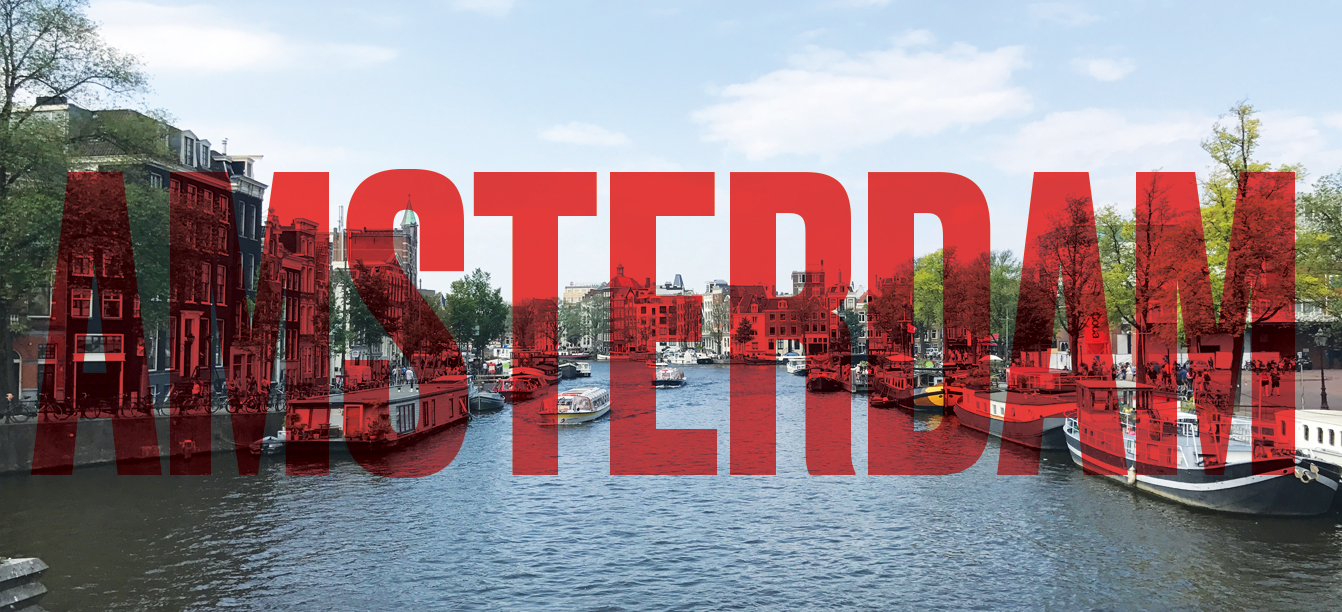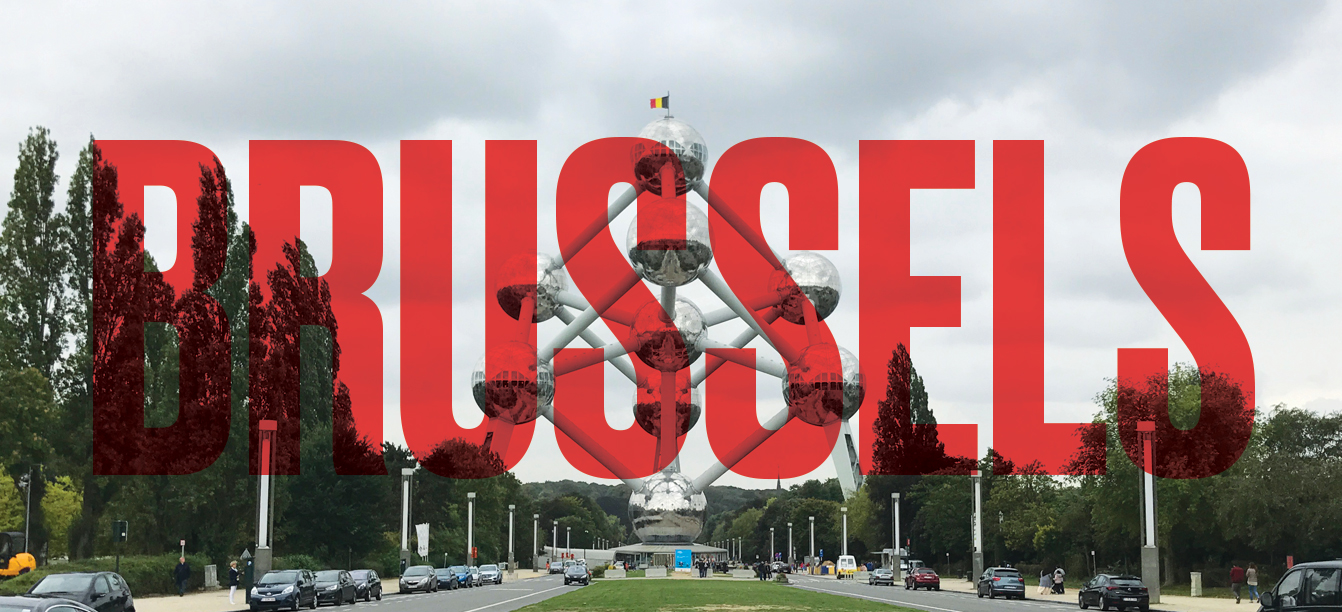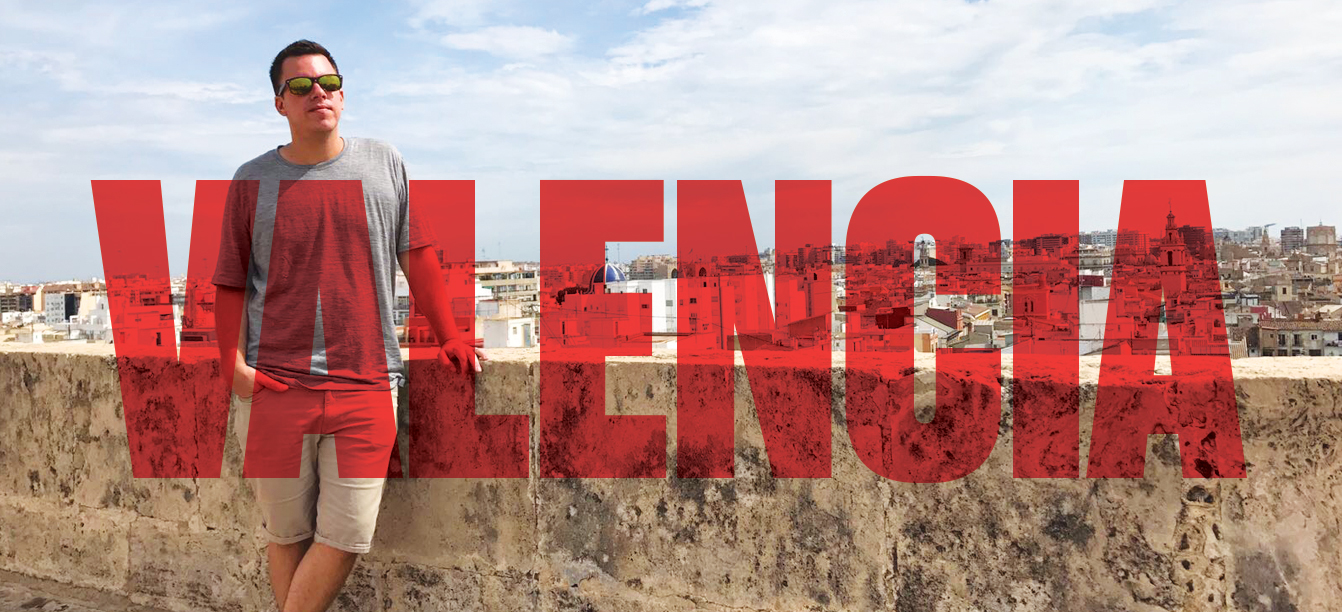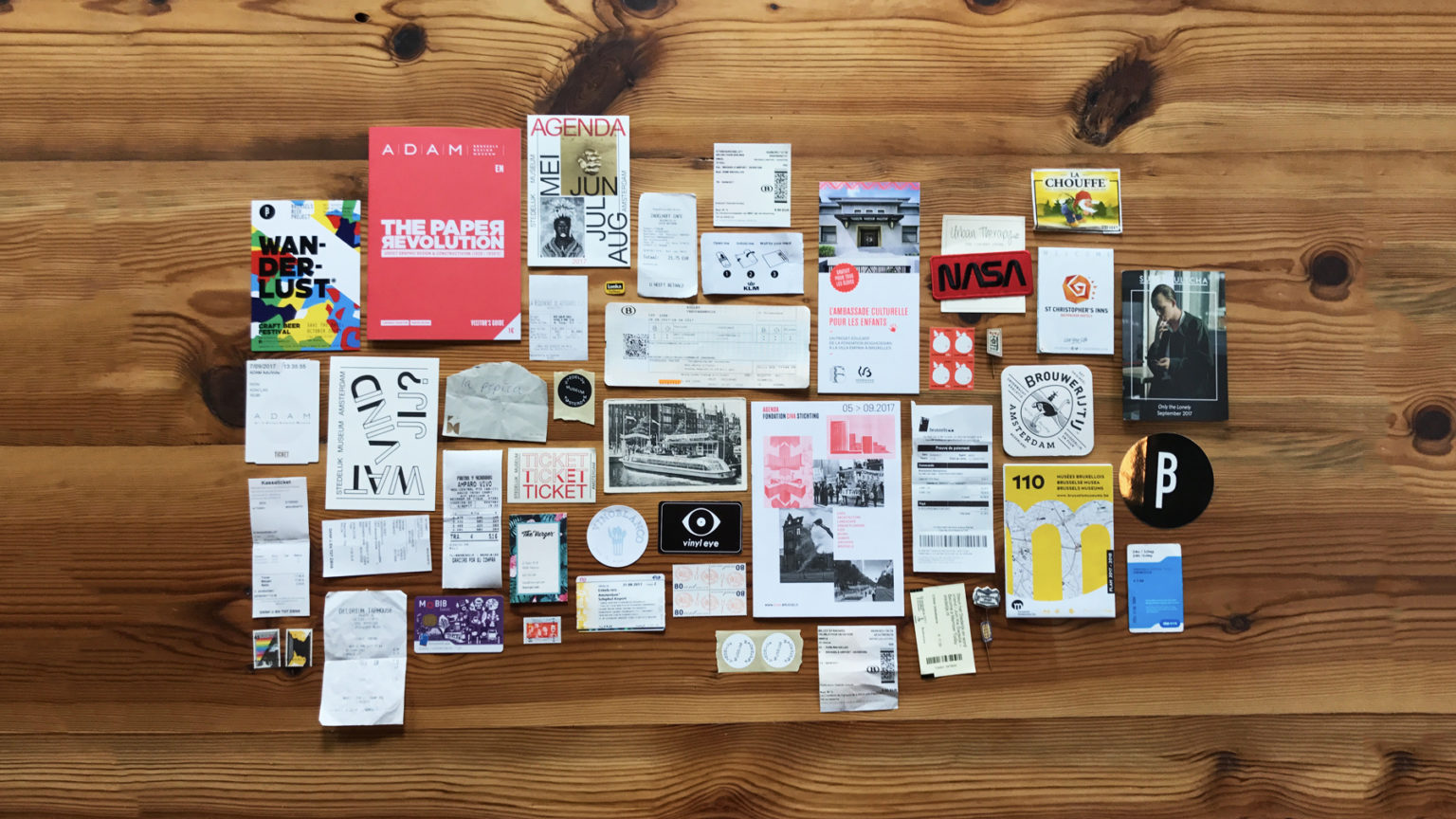In recent years traveling, my wife and I have focused on packing light and resisting the urge to collect every cute tchotchke along the way. We try to travel only with backpacks to reduce transport times as well as physical and mental strain on our (sometimes long) travel days.
While I rarely bring home physical souvenirs, the things I do enjoy collecting most are the small ephemeral scraps of everyday life. I appreciate the understated details in the train ticket or the unique typography of the thermal-printed receipt from the cafè.
For me, it’s interesting how these utilitarian items are able to pass through our possession with function but also almost unnoticed. Perhaps it’s a metaphor for my design practice and the work I put into the world, or maybe its just looking at familiar items in an unfamiliar place with a shifted perspective. Either way, I always develop an emotional connection to travel ephemera and file it away as one of my most valued travel keepsakes.

Between Amsterdam’s high-fashion concept stores and outdoor community markets, Amsterdam has amazing design details hidden in every corner of the city. You can really see the history and craftsmanship of hundreds of years of design and architecture practice, pretty much everywhere you look.
Amsterdam pro-tip:
Skip the Van Gogh Museum and be sure to hit up the Stedelijk Museum of Modern and Contemporary Art. You’ll avoid the long Louvre-esque crowds and still see some world-class modern work from artists like Roy Lichtenstein and French artist Jean Dubuffet.

Brussels may not be as known for design as their Dutch neighbors to the north, but their design scene is nothing short of vibrant. The city celebrates a month of design with over 100 cultural and commercial events throughout the city in what they call Brussels Design September. We visited the newly opened Brussels Design Museum. The museum’s permanent exhibition THE PLASTICARIUM COLLECTION” features a permanent exhibit on plastics of the 20th century through current day. The exhibition features colorful pieces of pop-functionalism and mass production plastics of the early 1960s, a time of unprecedented expansion for design, prolific output, and carefree consumption.
Brussels pro-tip:
Visit Brussels Beer Project brewery and order pizza next door from the small family pizza shop, La Belle Equipe” They’ll deliver it right to the brewery where you can enjoy a slice in the back room while watching the BBP crew brew up latest craft Belgium beer. The brewers say it’s some of the best thin crust pizza in Brussels and, in my opinion, well worth the wait.

Aside from architecture, history dating back to the Roman Empire and ancient old town ruins, Valencia is widely known for vibrant street art with hundreds of years of architectural history visible down every narrow alleyway throughout the old city.
Throughout Valencia, few street artists are as prolific as David De Limòn” His Ninja figures can be spotted in just about every corner of the city carrying a heart shaped badge across the chest. Limòn has been active in the Valencia street art scene since the 90’s. The overall street art vibrancy of Valencia reminds me most of my recent trip to Valparaiso, Chile. Similar vibrant mural-filled streets and laid back bohemian atmosphere.
Valencia pro-tip:
Grab a bike from the many bike rental locations and tour the city. Over the last 20 years, Valencia has become a very bike friendly city. We hired a local guide and saw the entire city in just 3 hours.
After touring, catch a late night read: Spanish early-evening) dinner around 11 pm in the hipster Ruzafa neighborhood before heading out to the late night club scene, which kicks off around 2 am.
Interested in more about Amsterdam?
On the Grid is a great city guide by local creatives. The Amsterdam UX agency The Artificial put together a nice collection of spots in one of the neighborhoods I visited, Jordaan.
Want to learn more about Brussels design?
ADAM Design Museum has a variety of events throughout the year as well as a rotating temporary exhibition with partnerships such as the current Russian Constructivist The Paper Revolution”, an exhibition in partnership with the Moscow Design Museum.


